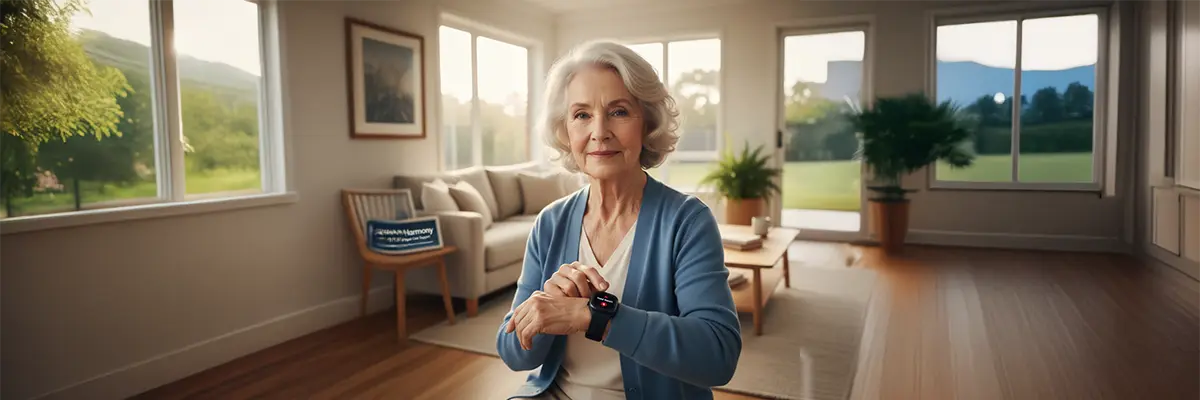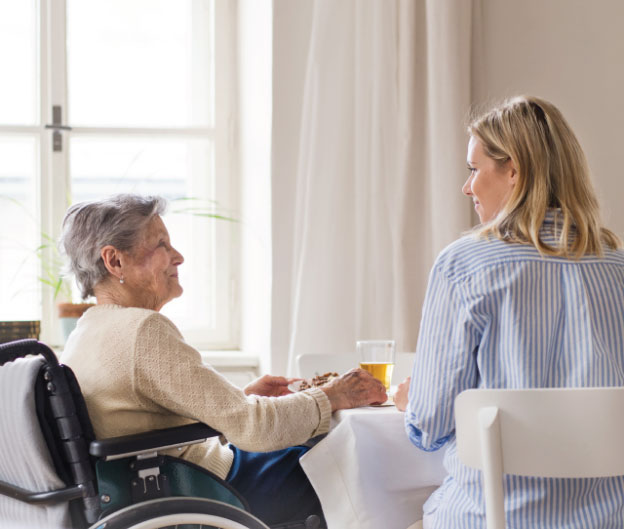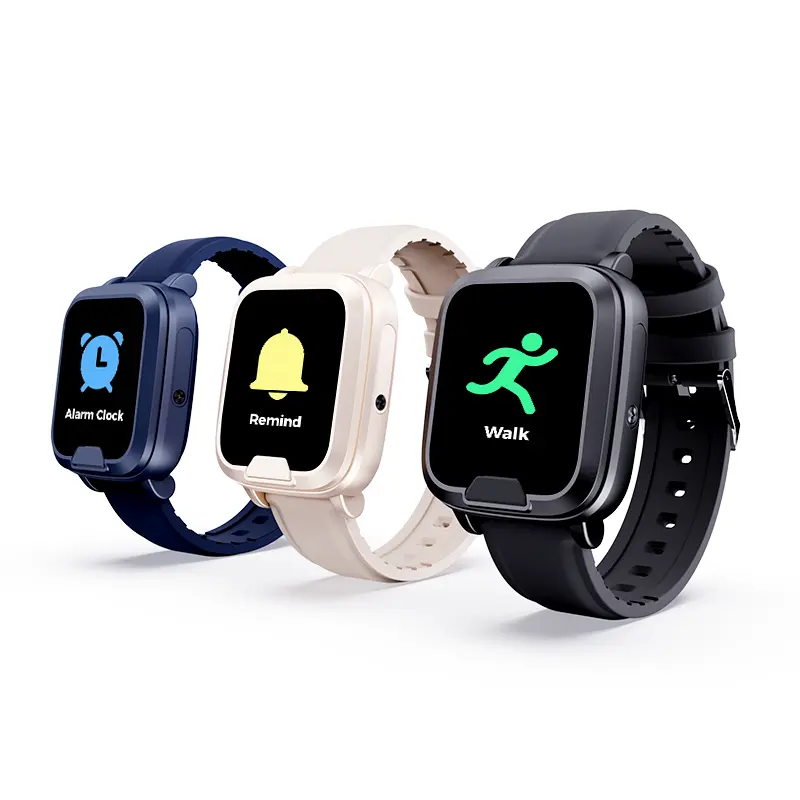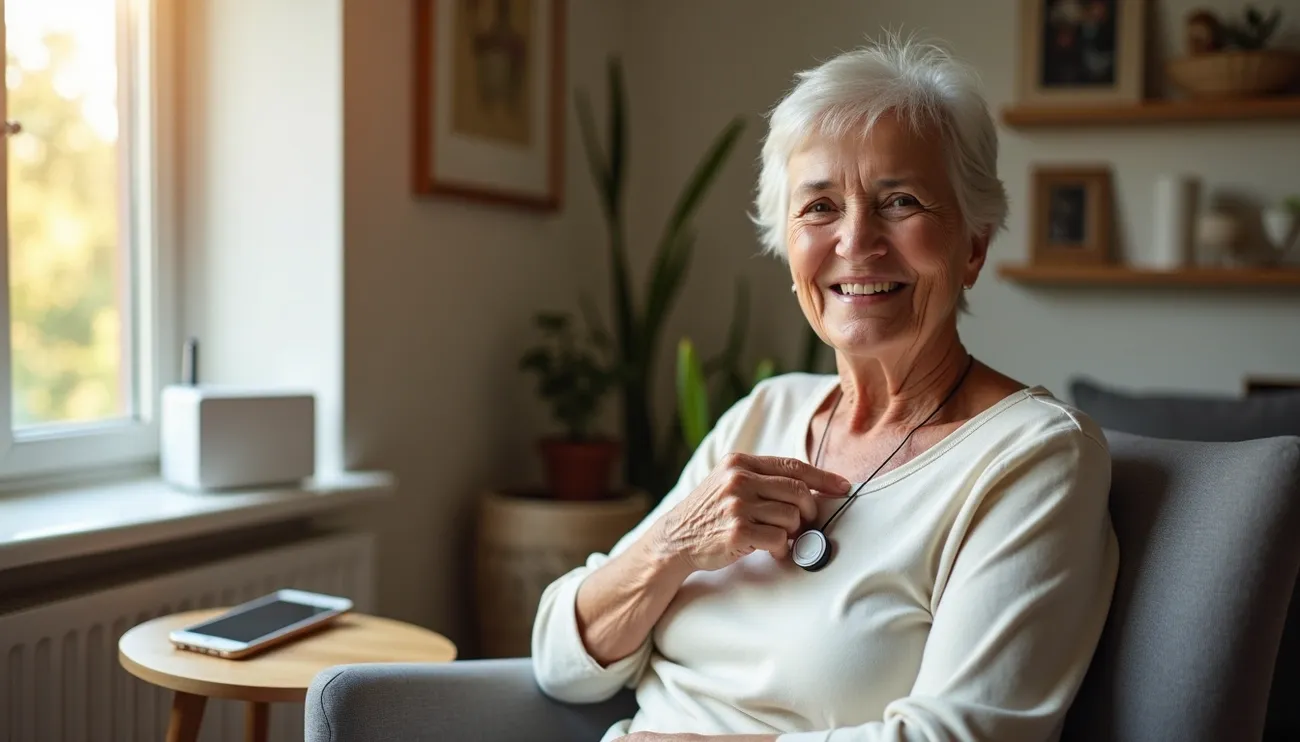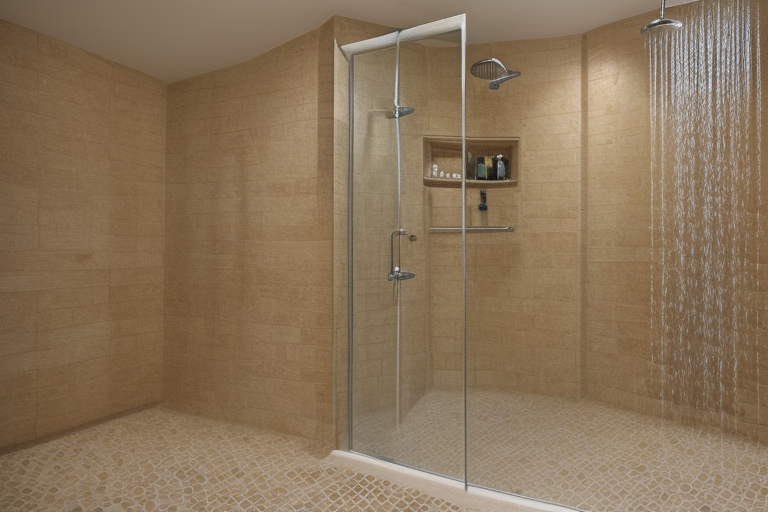Quick reality check: Australia’s aged care system gets its biggest shake-up since Medicare when the Support at Home Programme launches in November 2025. Eight funding classifications replace the old four-level Home Care Packages, with annual budgets spanning $10,697 to $77,709 [6] [19].
Personal alarm systems get dedicated funding through the new Assistive Technology and Home Modifications Scheme—up to $15,000 for extensive modifications without touching your regular care budget. AT-HM scheme is funded separately to your ongoing Support at Home services[6]. My Aged Care remains your gateway for accessing government-funded services [22].
The old system forced impossible choices. Need a personal alarm? That money came out of your care package, leaving less for cleaning, meals, or nursing support. November 2025 changes everything.
Eight classifications replace four rigid packages [6]. Classification 1 starts at $10,697 yearly, scaling up to $77,709 for Classification 8 [6]. But here’s what matters most—safety equipment gets separate funding streams.
Personal alarms, GPS trackers, fall detection devices—they’re funded through dedicated channels that don’t raid your care budget [6]. Low tier cost up to $500, medium up to $2,000, major (high tier) home changes reach $15,000 [6].
Victorian seniors already benefit from Personal Alert Victoria (PAV) offering free systems to eligible residents [19]. The new programme extends similar support nationwide, matching individual needs rather than forcing seniors into preset categories.
Planning ahead makes the difference between seamless access and months-long waits. Whether you’re securing your own independence or helping aging parents stay safe at home, understanding these funding pathways becomes essential before the November 2025 launch.
Personal alarm funding no longer competes with other care needs. Smart planning now pays dividends when the new system goes live.
What is the Support at Home Programme and how does it work?
Australia’s aged care gets its first complete overhaul since the Royal Commission delivered its damning findings. November 1, 2025 marks the official launch date—replacing Home Care Packages and Short-Term Restorative Care programmes with something that actually works [5][5].
Eight classifications replace the old four-level system, each with dedicated quarterly budgets based on assessed needs [19]. Commonwealth Home Support Programme joins the transition no earlier than July 1, 2027 [5][14].
Royal Commission demands drive 2025 reform
The Support at Home Programme responds directly to Royal Commission into Aged Care Quality and Safety recommendations [5]. Starting November 1, 2025, it initially replaces Home Care Packages (HCP) and Short-Term Restorative Care (STRC) programmes. Commonwealth Home Support Programme (CHSP) follows by July 2027 [5][14].
Eight distinct classification levels provide quarterly budgets matched to individual needs [19]. Separate funding streams support assistive technology and home modifications—removing the forced choice between safety equipment and regular care.
Old system versus new approach
|
Current approach |
Support at Home |
Why it matters |
|
4 rigid package levels |
8 classifications + 4 transition categories [19] |
Better matches individual needs |
|
Multiple assessment pathways |
Single assessment system [22] |
Cuts confusion and waiting times |
|
Care packages with set allocations |
Quarterly budgets + separate tech funding |
More flexible, targeted support |
|
Limited modification support |
Dedicated assistive technology scheme |
Safety equipment doesn’t compete with care |
Key funding changes:
Ongoing quarterly budgets based on classification level
Specific funding for assistive technology and home modifications
Dedicated pathways for restorative care (up to 16 weeks) and end-of-life care [19]
Programme goals: staying home longer, staying safer
Primary focus: Help older Australians remain in their homes longer through improved access to services, equipment, and modifications [5][5]. The Royal Commission identified massive gaps—this programme plugs them systematically.
Specific improvements:
Tougher regulations with enforceable quality standards
Reduced wait times through streamlined assessment
More support levels matching diverse needs [19]
Philosophy shift: Prevention over intervention. Wellness and reablement support independent living rather than creating dependence [22]. The old system waited for crisis—the new one prevents it.
This represents the biggest structural change to aged care in decades. More classifications, dedicated equipment funding, and person-centred planning replace the rigid packages that forced millions into unsuitable arrangements.
How are elderly alarms funded under the Support at Home Programme?
Yes – under the AT-HM Scheme creates dedicated funding streams for personal alarms—separate from your regular care budget.
Three funding tiers unlock different levels of support: Low (under $500), Medium (up to $2,000), and High (up to $15,000) [5]. Funding covers the complete package—device, setup, and training.
Assistive Technology and Home Modifications (AT-HM) Scheme: Your Safety Equipment Lifeline
The AT-HM Scheme tackles the biggest problem in the old system—forcing seniors to choose between safety and care. Personal alarms, fall detectors, GPS trackers—they now get dedicated funding that doesn’t touch your quarterly care budget [6].
No more impossible decisions. Need a personal alarm and weekly cleaning? You get both.
Three Funding Tiers That Match Your Needs
|
Tier |
Funding Amount |
Duration |
What It Covers |
|
Low |
Under $500 |
12 months [7] |
Basic personal alarms, simple modifications |
|
Medium |
Up to $2,000 |
12 months [83] |
GPS-enabled devices, multi-feature systems |
|
High* |
Up to $15,000 |
12 months [5] |
Advanced monitoring, extensive home modifications |
*Participants can access assistive technology that exceeds this amount if they have a prescribed need.
Key advantage: These amounts cover everything—professional assessment, device prescription, installation, and comprehensive training for safe use [8].
What Alarm Systems Qualify for Funding?
Eligible personal alarm systems include:
In-home personal alarms with base units
Mobile alarms with GPS tracking capability
Wearable devices with automatic fall detection
Systems featuring two-way communication and 24/7 monitoring [9]
Assessment drives choice. Your individual risk profile determines which tier you qualify for and which devices best meet your needs.
The Game Changer: Separate Funding Streams
Yes—you can access alarms without depleting your care budget. AT-HM funding operates independently from your quarterly service allocation [7]. Safety equipment no longer competes with nursing visits, meal preparation, or home cleaning.
Previous system: Personal alarm = $400 less for other care services
New system: Personal alarm = dedicated funding, full care budget intact
Streamlined Access Through Single Assessment
The Support at Home Programme eliminates bureaucratic maze-running. Assessors determine AT-HM eligibility during your standard aged care assessment [7]. One evaluation, multiple funding streams, faster access to essential safety equipment.
Smart planning now sets you up for immediate access when the programme launches.
What types of elderly alarm systems are available?
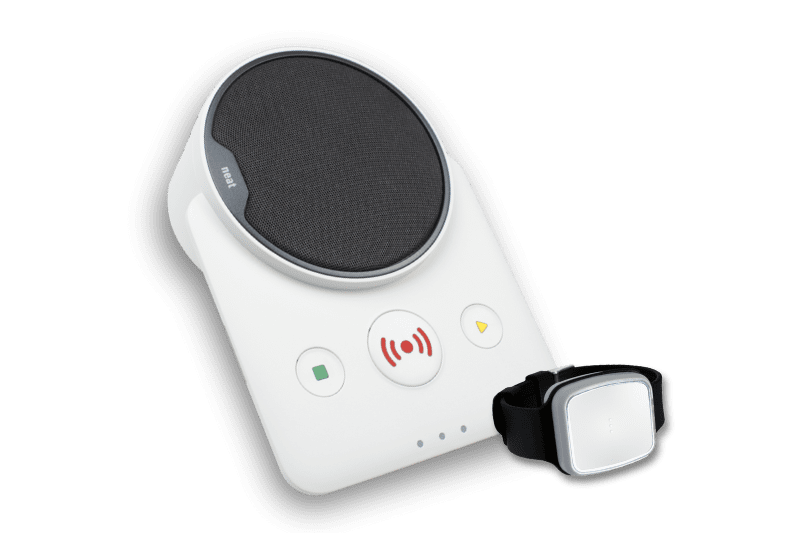
Image Source: Telecare24
Three main alarm types fit different lifestyles and funding levels. Your choice depends on mobility patterns, living situation, and which AT-HM funding tier you qualify for.
|
Alarm Type |
Best For |
Key Features |
Typical Cost Range |
|
In-home systems |
Home-focused seniors |
Waterproof pendant, base unit, 2-3 year battery |
Low-Medium tier |
|
Mobile GPS alarms |
Active seniors |
Australia-wide coverage, location tracking |
Medium tier |
|
Wearable watches |
Tech-comfortable users |
Fall detection, discreet design |
Medium-High tier |
In-home personal alarms: Simple and reliable
Waterproof pendant connects to a cellular base unit—no landline required. Large SOS button makes activation easy during emergencies [10]. Base unit includes backup battery for power failures [1].
Range limitation: Works within home and garden only. Step beyond the base unit’s range, lose protection [1].
Battery advantage: Pendant typically lasts 1-3 years without charging—set and forget protection for home-bound seniors. Typical market samples.
Mobile alarms: Protection anywhere in Australia
Safe-Life 4G Personal Alarm operates on cellular networks without base units [1]. Press the button, and up to 10 pre-programmed contacts receive SMS alerts with your precise Google Maps location [11].
Geo-fencing alerts notify carers if you wander outside predetermined boundaries [11]—crucial for early dementia support.
Prices for mobile alarms span AUD 140 to above AUD 500 [10], fitting most Medium-tier AT-HM allocations. Typical market samples.
Battery reality: Mobile units need recharging every 1-5 days—manageable routine for active seniors comfortable with technology. Typical market samples.
Wearable alarms with fall detection: Automatic protection
Built-in sensors detect sudden movements followed by no movement—automatically sending alerts without user intervention [12]. Critical feature when wearers become unconscious after falling [10].
Smartwatch options offer customisable faces and discreet appearance, though touchscreens challenge those with limited dexterity [12].
Pendant-style wearables provide large, easy-to-press buttons for seniors preferring familiar interfaces.
Two-way communication and monitoring options
Device speaker enables direct conversation with emergency responders [13]. Choose between professional monitoring services (AUD 27.50 to AUD 61.16 monthly [10]) or family notification systems [14].
Professional monitoring advantages:
Fast response assessment
Immediate emergency service connection
24/7 availability
Situation evaluation by trained operators [12]
Water resistance: Bathroom safety essential
IP67 rating minimum—protects against dust and water immersion up to 1 metre for 30 minutes [10]. Essential specification since many falls occur in bathrooms [15].
Shower-safe alarms eliminate the dangerous routine of removing devices for bathing.
Matching alarms to your lifestyle
Active seniors leaving home regularly: Mobile GPS alarms provide Australia-wide protection [2]
Dexterity concerns: Large-button pendants beat touchscreen watches [10]
Living alone: Professional monitoring offers faster emergency response than family alerts
Budget-conscious: In-home systems typically cost less and last longer between charges
Your AT-HM funding tier determines available options. Medium-tier allocations (up to $2,000) cover most alarm types including professional installation and training.
How do you apply for a personal alarm through Support at Home?
The application maze gets simpler when you know the right steps. My Aged Care (1800 200 422) remains your starting point, but the new system streamlines what used to take months of back-and-forth paperwork.
Step 1: Register with My Aged Care
Eligibility basics: 65+ years (50+ for Aboriginal and Torres Strait Islander people) . Phone registration (1800 200 422) typically takes 15-20 minutes, or complete the online eligibility check if you prefer digital applications .
Have your Medicare card, health summary, and current support details ready. This front-loads the process and prevents callback delays that stretch registration into weeks.
Step 2: Get your aged care assessment
Assessments now happen in two parts—initial eligibility screening followed by comprehensive in-person evaluation . Assessors determine which assistive technologies suit your situation, including personal alarm recommendations.
Preparation checklist:
Health conditions affecting mobility or cognition
Current support networks and gaps
Daily living challenges you face at home
Previous falls or near-miss incidents
Smart tip: Document specific scenarios where an alarm would help. “I worry about falling in the shower” carries more weight than general safety concerns.
Step 3: Receive your support plan and funding tier
Your personalised plan specifies exactly which funding level you qualify for:
|
Funding Tier |
Amount |
What It Covers |
|
Low | Basic alarm systems, GPS tracking | |
|
Medium |
up to $2,000 | Advanced features |
|
High |
up to $15,000 |
Complex installations, multiple devices |
This detail matters—knowing your tier before shopping prevents disappointment and speeds provider discussions.
Step 4: Work with your provider to select an alarm
Provider conversations become productive when you understand your funding limits and specific needs. Most offer device demonstrations, helping you test button sizes, wearing comfort, and sound quality before committing.
Water resistance, fall detection, and monitoring options vary significantly between models. Match features to your actual daily routines, not theoretical scenarios.
Step 5: Setup, training, and ongoing support
Professional installation includes emergency contact configuration, system testing, and hands-on training until you feel confident using the device. Ongoing technical support and emergency relocations come standard with most providers .
Installation day essentials:
Test the alarm from different rooms
Practice emergency scenarios
Confirm all contacts receive test alerts
Understand monthly monitoring arrangements
The new funding structure removes the old barriers that made personal alarms a luxury rather than essential safety equipment. Start your application now—the November 2025 launch means early registrants avoid the initial rush.
Conclusion
Australia’s aged care funding just got simpler. November 2025 brings dedicated safety equipment budgets that stop the old trade-offs between personal alarms and essential care services.
The Assistive Technology and Home Modifications Scheme removes the biggest barrier—separate funding means your alarm system won’t compete with cleaning, meals, or nursing support. Three funding tiers match different needs without the guesswork.
Equipment choice matters. Active seniors need GPS-enabled mobile devices for protection beyond home. Those with fall risks should prioritise automatic detection over basic push-button models. IP67 water resistance keeps devices working through bathroom emergencies where most accidents happen.
My Aged Care (1800 200 422) starts your journey. Register, get assessed, receive your funding tier, then work directly with providers to install the right system. The process works when you start early – waiting until November means joining launch-day queues.
Personal alarm access becomes a planning exercise, not a funding battle. Your safety equipment budget exists separately from care services, ending years of impossible choices between security and support.
Start gathering your health information now. Understand your daily challenges, mobility needs, and support networks before assessment day arrives. Early preparation beats last-minute scrambling when the new system launches.
The choice becomes simple: prepare now for seamless access, or wait and compete with thousands of other seniors discovering the same opportunities in November 2025.
Key Takeaways
The Support at Home Programme launching in November 2025 will revolutionise access to elderly alarms through dedicated funding that doesn’t impact your regular care budget.
• The new Assistive Technology and Home Modifications Scheme provides three funding tiers (up to $15,000) specifically for safety equipment like personal alarms
• Eight classification levels replace the old four-tier system, offering annual budgets from $10,697.72 to $77,709 based on individual needs
• Modern alarm systems include GPS tracking, fall detection, and water resistance—choose mobile alarms for active lifestyles or in-home systems for basic protection
• Apply through My Aged Care (1800 200 422) for assessment, then work directly with providers to select and install your alarm system
• Unlike current programmes, alarm funding is separate from care budgets, meaning you won’t sacrifice other services for essential safety equipment
This reform represents a significant step forward in supporting independent living whilst ensuring safety for Australia’s ageing population.
FAQs
Q1. Who is eligible for elderly alarms through the Support at Home Programme? Eligibility typically requires you to be 65 years or older (50 years for Aboriginal or Torres Strait Islander people). You’ll need to register with My Aged Care and undergo an assessment to determine your specific needs and funding tier.
Q2. How much funding is available for personal alarms under the new programme? The Assistive Technology and Home Modifications Scheme offers three funding tiers: Low (under $500), Medium (up to $2,000), and High (up to $15,000). The tier you qualify for will be determined during your aged care assessment.
Q3. What types of personal alarm systems are available? There are three main types: in-home systems with a base unit, mobile alarms with GPS tracking, and wearable devices like pendants or watches. Features can include fall detection, two-way communication, and water resistance. The best choice depends on your lifestyle and specific needs.
Q4. How do I apply for a personal alarm through the Support at Home Programme? Start by registering with My Aged Care via phone (1800 200 422) or online. You’ll then undergo an assessment to determine your eligibility and needs. Once approved, you’ll receive a support plan and can work with a provider to select and set up your alarm system.
Q5. Will getting a personal alarm affect my other care services? No, the new programme provides dedicated funding for assistive technology like personal alarms. This means you can access an alarm system without depleting your regular care budget for other services, ensuring you don’t have to choose between safety equipment and other essential care needs.
References
[1] – https://www.health.gov.au/sites/default/files/2025-07/support-at-home-program-classifications-and-budgets.pdf
[2] – https://www.health.gov.au/our-work/support-at-home/support-at-home-ongoing-services
[3] – https://www.health.gov.au/sites/default/files/2025-09/support-at-home-program-booklet-for-older-people-families-and-carers.pdf
[4] – https://mdhomecare.com.au/blog/government-funded-personal-alarms
[5] – https://www.thecareside.com.au/post/the-support-at-home-programme-overview/
[6] – https://www.health.gov.au/our-work/support-at-home/about
[7] – https://www.health.gov.au/our-work/support-at-home/features-of-the-new-support-at-home-programme
[8] – https://www.health.gov.au/sites/default/files/2025-06/support-at-home-program-assistive-technology-and-home-modifications-at-hm-scheme_0.pdf
[9] –ttps://www.southcare.org.au/southcare-stories/10-benefits-of-support-at-home/
[10] – https://www.myagedcare.gov.au/support-home-programme
[11] – https://www.health.gov.au/our-work/support-at-home/support-at-home-short-term-pathways
[12] – https://www.health.gov.au/resources/publications/support-at-home-program-classifications-and-budgets?language=en
[13] – https://www.health.gov.au/our-work/support-at-home/support-at-home-ongoing-services
[14] – https://www.choice.com.au/electronics-and-technology/gadgets/tech-gadgets/buying-guides/personal-alarms
[15] – https://www.health.gov.au/sites/default/files/2025-09/support-at-home-program-booklet-for-older-people-families-and-carers.pdf
[16] – https://safelife.com.au/product/safe-life-go-anywhere-pendant-with-gps-positioning-4g-personal-alarm/?srsltid=AfmBOopNVRgTMpDs7v5_FhjheI59qI-iqL-8Lb37rJf_e70-Zzu8hin_
[17] – https://australiancarersguide.com.au/personal-alarms-for-seniors-a-guide/
[18] – https://www.health.gov.au/sites/default/files/2025-07/support-at-home-program-classifications-and-budgets.pdf
[19] – https://www.health.gov.au/our-work/support-at-home/support-at-home-ongoing-services
[20] – https://www.health.gov.au/sites/default/files/2025-06/support-at-home-program-assistive-technology-and-home-modifications-at-hm-scheme_0.pdf





